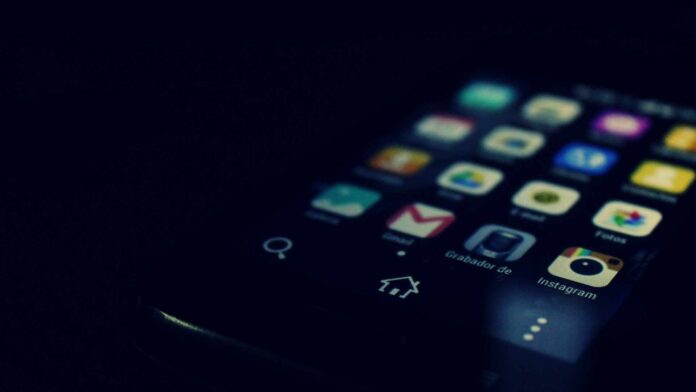A screen protector is a must-have accessory for any device with a screen, but replacing it can be a delicate process. Custom size screen protectors, in particular, can be challenging to remove and replace without damaging the device’s screen. However, with the right tools and techniques, you can safely remove and replace your custom size screen protector and keep your device’s screen in pristine condition.
In this article, we’ll provide a step-by-step guide to removing and replacing a custom size screen protector, along with tips and tricks to help ensure a successful and damage-free process. So, whether you’re replacing an old or damaged screen protector or simply upgrading to a new one, read on to learn how to do it the right way.
Materials Needed for Safe Screen Protector Removal and Replacement:
Before you start the process of removing and replacing your custom size screen protector, it’s important to gather the right materials to ensure a safe and successful outcome. Here are some of the essential materials you’ll need:
- A clean and dust-free work area: To prevent dust and debris from getting trapped under the screen protector, choose a clean, well-lit work area to remove and replace your custom size screen protector.
- Microfiber cloth: A microfiber cloth can be used to clean the surface of your device’s screen and remove any fingerprints, smudges, or dirt.
- Alcohol wipe or cleaning solution: An alcohol wipe or cleaning solution can be used to clean the surface of your device’s screen and prepare it for the installation of the new custom size screen protector.
- Dust remover sticker or tape: A dust remover sticker or tape can be used to remove any dust or debris that may be trapped on the surface of your device’s screen before installing the new custom size screen protector.
- The new custom size screen protector: Make sure you have the right size and type of custom size screen protector before you start the removal and replacement process.
Having all of these materials on hand will ensure a smooth and successful removal and replacement of your custom size screen protector.
Step-by-Step Guide to Removing the Old Screen Protector
Removing the old screen protector is the first step in replacing your custom size screen protector. Here is a step-by-step guide to removing the old screen protector:
- Clean your work area: Choose a clean and dust-free work area to prevent dust and debris from getting trapped under the screen protector.
- Prepare the device: Turn off your device and make sure the screen is clean and free of fingerprints, smudges, or dirt.
- Heat the old screen protector: Use a hair dryer or heat gun to gently heat the old screen protector for about 20-30 seconds. This will soften the adhesive and make it easier to remove.
- Lift the corner of the old screen protector: Use a plastic card or your fingernail to gently lift the corner of the old screen protector. Do not use a metal tool as it can damage the screen.
- Remove the old screen protector: Slowly peel the old screen protector away from the screen, taking care not to apply too much pressure. If the screen protector is difficult to remove, reheat it for another 20-30 seconds.
- Clean the device screen: Use a microfiber cloth and an alcohol wipe or cleaning solution to thoroughly clean the surface of the device’s screen.
By following these steps, you can safely and easily remove the old custom size screen protector from your device’s screen and prepare it for the installation of a new one.
Preparing the Device Screen for a New Screen Protector
Once the old screen protector has been removed, it’s important to prepare the device screen for the installation of the new custom size screen protector. Here is a step-by-step guide to preparing the device screen:
- Clean the device screen: Use a microfiber cloth and an alcohol wipe or cleaning solution to thoroughly clean the surface of the device’s screen. Make sure to remove any dirt, fingerprints, smudges, or other debris.
- Check for dust: Use a dust remover sticker or tape to remove any dust or debris that may be trapped on the surface of the device’s screen.
- Align the custom size screen protector: Lay the new custom size screen protector on top of the device’s screen to make sure it’s the right size and to get a rough idea of how it will fit.
- Peel off the protective film: Peel off the protective film from one side of the custom size screen protector. Make sure not to touch the sticky side with your fingers.
- Align the custom size screen protector with the device screen: Align the custom size screen protector with the device screen and gently lay it down, starting from one corner and working your way towards the opposite corner.
By following these steps, you can prepare the device screen for the installation of the new custom size screen protector and ensure a smooth and successful process.
Installing the Custom Size Screen Protector with Care
Installing the new custom size screen protector is the final step in the process of replacing your device’s screen protector. Here is a step-by-step guide to installing the custom size screen protector with care:
- Align the custom size screen protector: Lay the custom size screen protector on top of the device’s screen, making sure it’s aligned with the device’s edges.
- Apply the custom size screen protector: Gently apply the custom size screen protector to the device’s screen, starting from one corner and working your way towards the opposite corner.
- Remove any bubbles: Use a plastic card or your finger to gently push out any bubbles or wrinkles that may form during the installation process. Start from the center and work your way towards the edges.
- Check for dust: Use a dust remover sticker or tape to remove any dust or debris that may be trapped under the custom size screen protector.
- Turn on your device: Once the installation process is complete, turn on your device to make sure the custom size screen protector is properly aligned and functioning.
By following these steps and using care, you can install your new custom size screen protector and keep your device’s screen protected from scratches, cracks, and other damage.
Tips for Maintaining the Integrity of the Screen and Protector
To maintain the integrity of your device’s screen and custom size screen protector, here are some tips to follow:
- Avoid sharp objects: Do not place sharp objects near or on your device’s screen, as this can cause scratches or cracks in both the screen and the screen protector.
- Clean with care: Use a microfiber cloth and a cleaning solution specifically designed for custom screen protectors to clean your device’s screen. Avoid using paper towels or rough cloths that can cause scratches.
- Store with care: Store your device in a case or cover to protect it from scratches, cracks, and other damage.
- Avoid extreme temperatures: Do not expose your device to extreme temperatures, as this can cause damage to both the screen and the screen protector.
- Replace the screen protector when necessary: Over time, your custom size screen protector may become scratched, cracked, or otherwise damaged. If this happens, replace the screen protector to ensure the protection of your device’s screen.
By following these tips, you can maintain the integrity of your device’s screen and custom size screen protector and keep your device in top condition.
Troubleshooting Common Problems with Screen Protector Installation
Screen protector installation can sometimes be tricky, and you may encounter some common problems along the way. Here are some troubleshooting tips to help you resolve these problems:
- Bubbles or wrinkles: If you notice bubbles or wrinkles forming during the installation process, use a plastic card or your finger to gently push them out. Start from the centre and work your way towards the edges.
- Dust or debris: If you notice dust or debris trapped under the screen protector, use a dust remover sticker or tape to remove it.
- Poor alignment: If the custom size screen protector is not aligned with the device’s edges, gently lift it up and realign it.
- Peeling or lifting: If the custom size screen protector begins to peel or lift at the edges, use a plastic card to gently push it down.
- Touchscreen sensitivity: If you notice a decrease in touchscreen sensitivity, make sure there is no dust or debris trapped under the screen protector. If the problem persists, you may need to replace the screen protector.
By following these troubleshooting tips, you can resolve common problems with screen protector installation and ensure the protection of your device’s screen.
Conclusion
In conclusion, replacing a custom size screen protector can be a simple and straightforward process if you follow the steps and use care. By removing the old screen protector, preparing the device’s screen, and installing the new custom size screen protector with care, you can ensure the protection of your device’s screen from scratches, cracks, and other damage.
Additionally, by following tips for maintaining the integrity of the screen and protector and troubleshooting common problems, you can keep your device in top condition. With these tips, you can confidently replace your custom size screen protector and keep your device’s screen protected.






